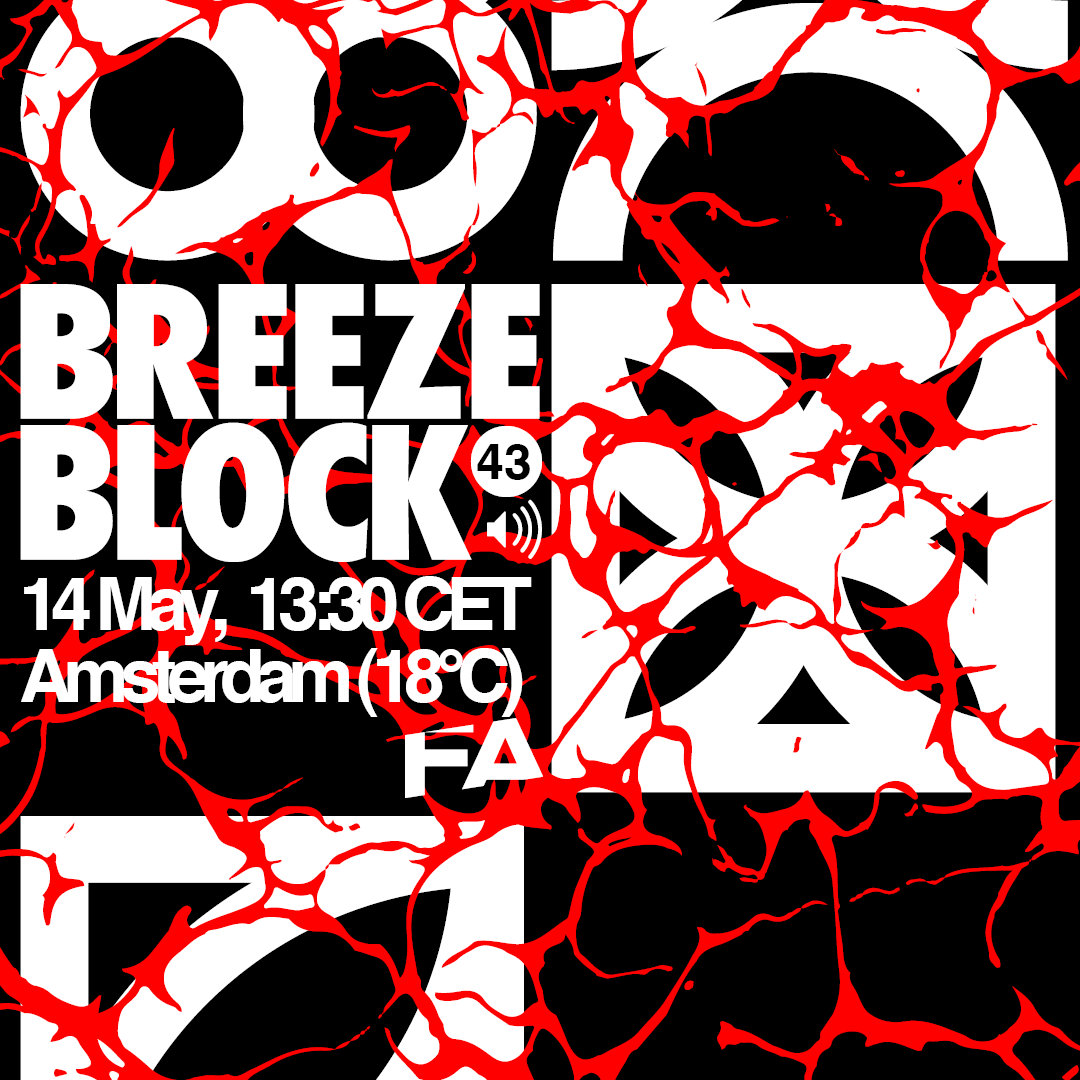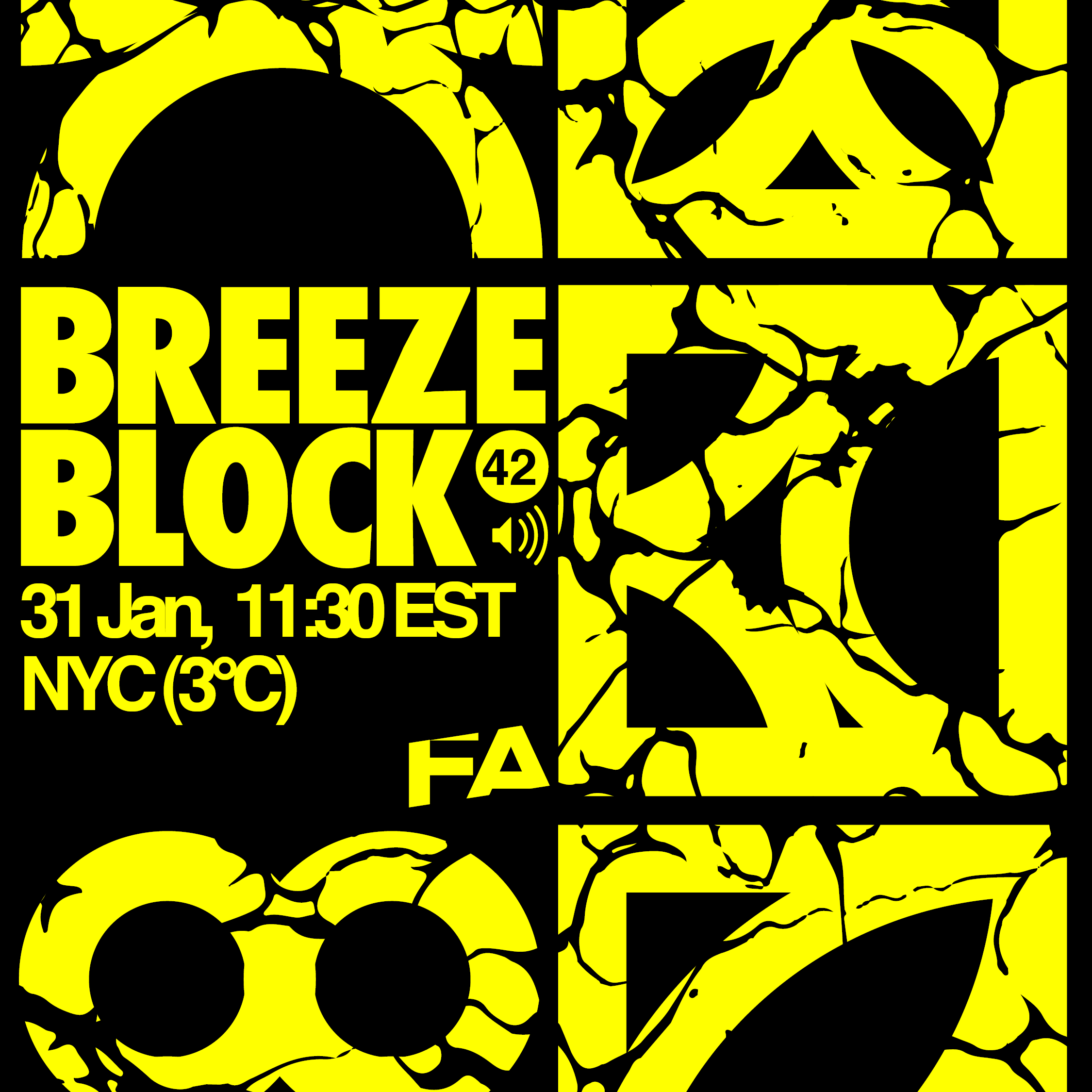Episode Transcript
Speaker 0 00:00:02 Hello, and welcome to breeze blocks wherever they choose. This course works in progress, urgent matters, and current happenings in architecture and spatial politics. My name is Maria <inaudible> today. I'm joined by <inaudible> a fellow editor from fellow architecture, pagoda. Nice to have you here,
Speaker 1 00:00:19 Maria. Thank you for having me. I'm really happy to talk to you in the last
Speaker 0 00:00:23 Episodes of breeze blocks. Port from cities like Istanbul have been discussing what is happening during the quarantine and what are the consequences of this situation in the urban landscape before going into details? I think it could be useful to have an overview of what is happening, but what that right now, the country started the national lockdown on March 24th. And this means that after a month under the circumstances, the social consequences are becoming visible.
Speaker 1 00:00:49 Yes, Maria, right hearing in Bogota, we have a rather strict quarantine. This is a national lockdown and what this parenting allows people to go out for their basic daily needs such as buying groceries, going to the bank or walking their dog. Also, there is a control on the amount of people circulating on the streets in that regard last week, Bogota enforced a new rule it's agenda day. So that means that people are allowed to go out every other day. According to the gender that they identify with, this has of course been a controversial, uh, for the LGBT community.
Speaker 0 00:01:33 Now that you mention this capacity to slow down the city, depending completely on these large groups of essential workers. I started to think about an article that was written in Philly architecture by Kevin Rogan. He's one of the editors of filled architecture in New York to our listeners. If you haven't read it, please visit Felder architectural.com and look for the CT and the CT and Corona virus. Anyway, I'm thinking about it because what Rogan does is a critique about another article written by Michael Kimo, Medford, New York times in that piece, chemo man mourns the collapse of urban life brought by the Corona virus. And what Kevin is exploring in his article is that the city of essential workers is really far from that romantic idea of the empty city. That key moment is describing.
Speaker 1 00:02:27 Yes, I agree. I think that he mailman's romantic view really obscures the dynamics that are going on on CDs currently. So there are, of course these essential workers. And I also can think of just how much complicated or is actually the city. When we looked at how the measures that have been taken to confront the spread of the buyers, lay bare, the deep inequalities that we have been used to living in. So in Bogota, of course, there are peaceful areas where people are smoothly compliant with the current time and also essential workers circulating across the city, ensuring that the city keeps ongoing yet. These pockets of peaceful compliance are just a small bubble swimming in a sea of terminal. I think there is a latent violence in our societies, infrastructures, and spaces. It was a violence that was already there just waiting for something such as these to happen. You know, there is a proclivity to ignite a deeper aggression in many of our infrastructures and spaces.
Speaker 0 00:03:34 When you talk about latent violence, I can think about, for example, the rights that are happening now in Columbia and the prisons, because they're overcrowded and also Venezuelan migrants. I think all of these are events and things that have been happening for long, and it may appear that the governments were caught off guard, but this is really not as reprice. And it was something that was really on attendant. And yeah, as you were saying, it was there quiet happening, but not being taken care of. And now it's exploding even more with this crisis. He's also
Speaker 1 00:04:03 Makes me think of how the virus is already taking a toll in specific spaces and populations. You know, just recently the mayor of Boda Claudia Lopez launched an open data website. So it shows how the virus has been moving from wealthy areas of Bogota to poor areas and where the poorest people live often intersects with the most dense, overcrowded, less green and most polluted and toxic areas of the city. So these make people not only more likely to get the virus to be infected, but also to dying from it. And I also think that this data just shows how the unequal distribution of our environmental goods and bads mirrors. They are an equal social spatial distribution of wealth in our cities. And regarding these to make it maybe more clear what also one of the main problems in this area is, is the correlated issue that many of the people who lived in these areas work in informal activities that is outside and parallel to a formal economy. So the measures that are being taken to confront the virus or to help the spread of the virus also mean that these informal networks of economic collaboration are being interrupted. These are really important issue in Colombia because 50% of the population lives off the informal economy.
Speaker 0 00:05:32 Yes, as a whole, uh, informal infrastructure supports a lot of economic collaboration. Maybe going back to the article we were talking before, it's not only the city of essential workers in the case of Botox, but it's actually the city of all these informal workers that they don't have. Any other option that going out. It would be interesting to hear how informalities embedded culturally and in urban dynamics of the city and how these two needs are being reconciled or negotiated. I think maybe we could start by defining this informality to our listeners. I think one productive
Speaker 1 00:06:08 Way to understand the activities of informal workers is a way that they articulate resources, activities, and urban landscape for their sustenance. A few examples that I can think of that are part of the daily life of Bogota might help. Um, so for example, route trackers that is persons who strategically locate on, on, on traffic lights along main avenues to inform bus drivers, the distance between them and the bus ahead of them also luggage carriers in the bus station that offered their services to passengers, you know, on a rainy day street vendors, locate in crowded spot to offer, uh, pedestrians umbrellas. So in that sense, these processes are open-ended and contextual and therefore often unpredictable. And for that reason, they are illegible for governments who are monies that do <inaudible> talks about this informality as a complex combination of objects, spaces, persons, and practices that create a flexible infrastructure that provides for and reproduces life in the city. Also the informal economy has long been a scapegoat for governance for the inability of government to ensure sustain us for a large part of its population. Yet at this point, making these practices legible are essential for the government to avoid a social disaster. They have recognized this, I think then
Speaker 0 00:07:43 Informality is being recognized or traced by the city. What is the government doing to make informalities tangible or visible in Botox? You were saying, I'm asking to know if there are any clear examples that are already functioning in the city. And also I think it would be nice to know what is people doing about it? What is their general reaction?
Speaker 1 00:08:07 I can think of two examples that make these efforts very clear. So the first one is a four day quarantine drill that the mayor of Bogota enforced before the start of the national lockdown, part of the effort of having these simulated environment was to make it legible. Those who are not included on the stats, those who were not on the map, you know, so during those four days, the city became a testing ground for city officials to evaluate behaviors, to see who was not able to comply with the measures. And the second effort I can think of is the red flag strategy, a solidarity strategy made by the mayor of Satya, a city that is bordering Bogota, a city of one inhabitants with very low incomes. And his strategy was to tell people that if in need of help, that they should have red clothes on their windows, you know, to make physically legible what was not in the official statistics.
Speaker 1 00:09:11 And this is a key point because, because in the official statistics, in the national statistics, uh, so our team has over 500,000 inhabitants and, uh, they may your claims, it has over 1 million. So he needed to make physically legible the people that were, uh, in need, you know, and these use of red flags actually has this spread around the country and people are using them to sign out their need and also the lack of assistance. But I think these two things, you know, the effort to having an accurate information on the part of the government to have knowledge in order to be able to govern in these situation runs simultaneously with the complex web of activities that characterize informality. So these economies are also stopped with the current time and the government still appears to be unable to keep the pace, but it's a simultaneous process.
Speaker 0 00:10:07 It's clear with such a big amount of informal population, that it is a situation deeply fixed in the city's basic dynamics. And therefore the mutual exchange between both formal and informal becomes the only way to see what is lacking and an option to overcome the crisis. Right?
Speaker 1 00:10:28 I agree. I think that the interplay of both is needed. I think the government needs to have accurate social economic and spatial information, particularly in a moment such as this one, yet often governments lose because of their overconfidence in those simplified statistics and classification on those mappings. You know, and I think that we should always be aware that these stringent modes of collaboration, this idea of people as infrastructure, tend to escape the government techniques and that's okay, the, the map will never be finished or will be perfect. That's part of the very open-ended and unpredictable processes that we're talking about. But I do think that there is a wisdom that we should, that shouldn't be ignored in these informal economies of collaboration. I think that looking closely at these practices can encase our responses and our capacity to switch gears and reconfigure the activities of cities.


